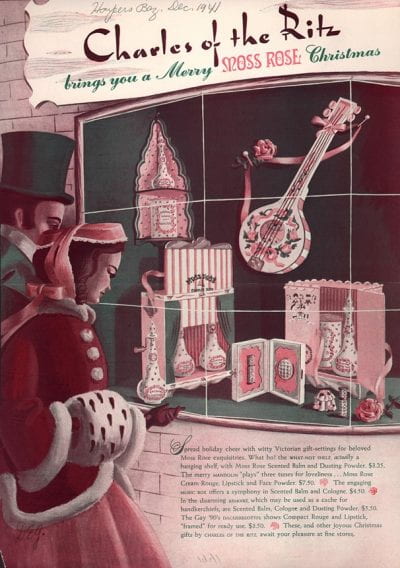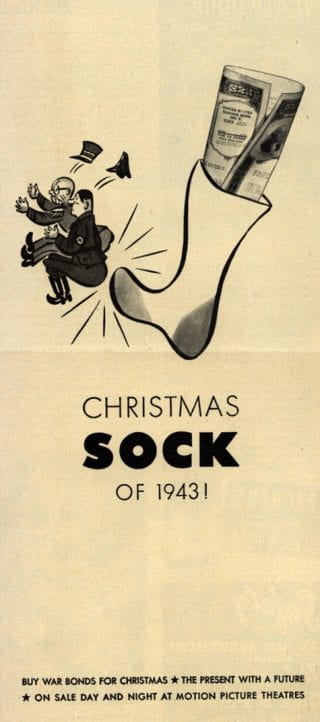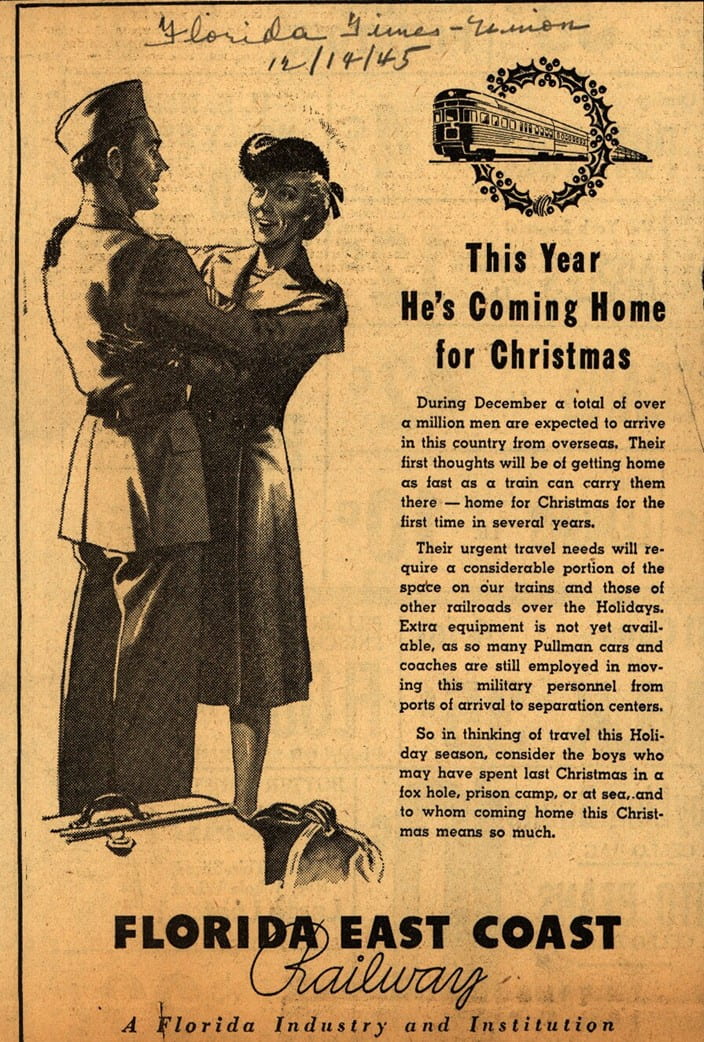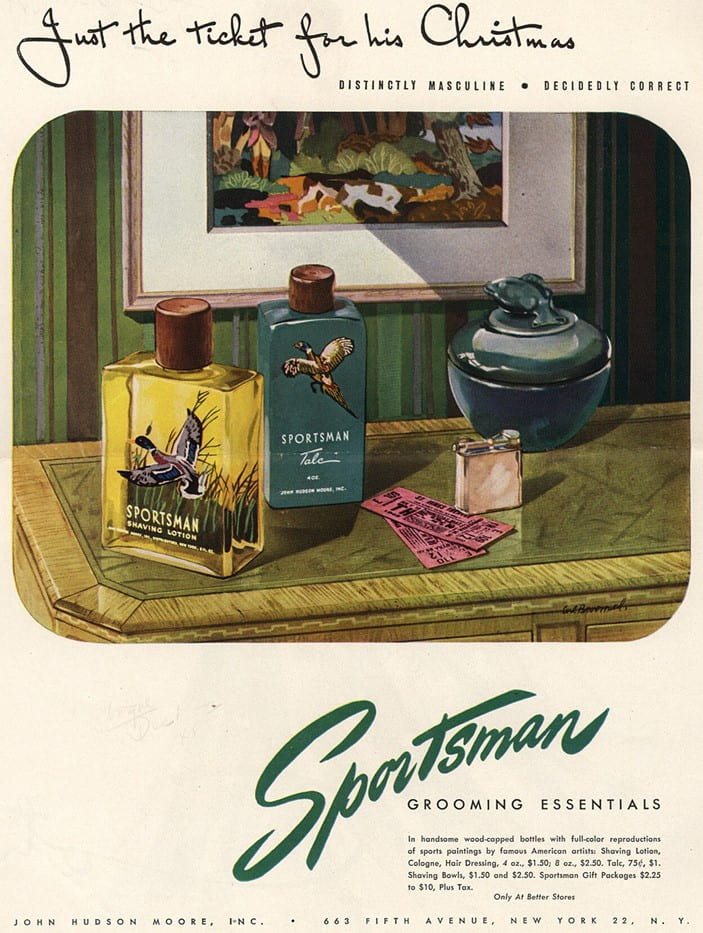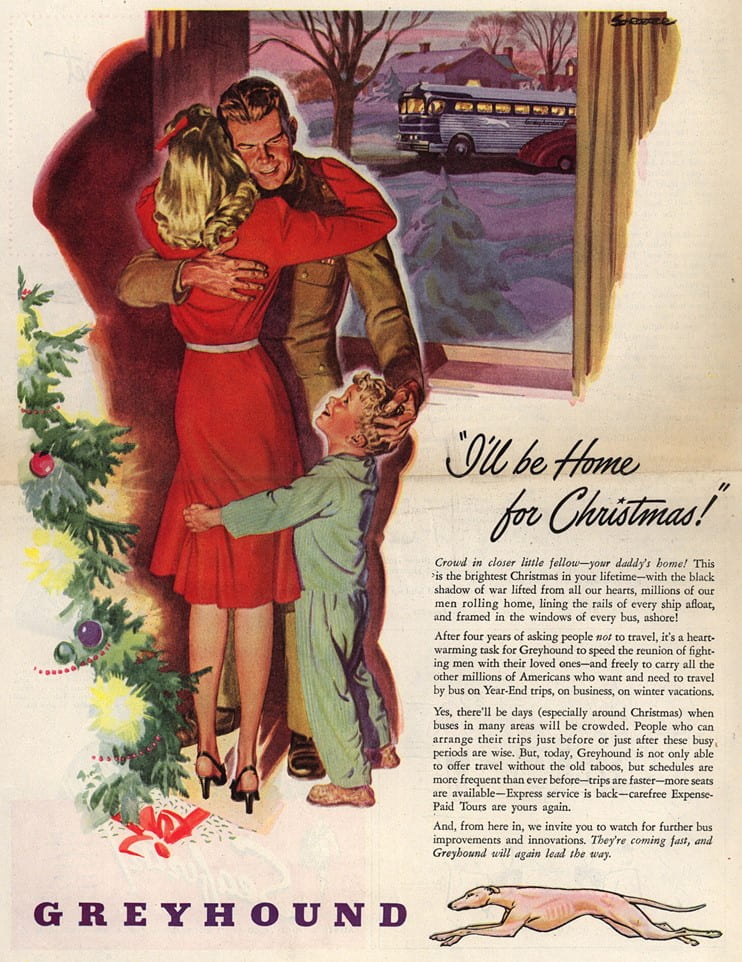Holiday Countdown
Day 1: Past
Author: Alison Fong is the outreach intern for the University of Arkansas Museum, Museum Advisory Council member and a senior majoring in History, International & Global Studies, and Asian Studies.
During World War II, the holidays were a little different for most families who had sent their sons, fathers, and brothers off to war. Normally a time of joy and laughter, the holidays were tinged with absence and tension over the years that the United States was at war across both oceans. To start off our Holiday Countdown, we’re looking at holiday advertisements from 1941 to 1945 to see how the holidays were a little different during wartime.
The United States entered WWII officially in December 1941. It was an odd holiday for most families, as they began to see their relatives off to military camps to begin training. Just a few years ago, families were doing the same for WWI – albeit that American participation was late and much shorter than the rest of the combatants. The gloom of war had not yet settled in the American public, as they were still emotionally charged by the attack on Pearl Harbor.
In 1943, the tone drastically changed. Two years had gone by, and there still seemed to be no end to the fighting yet. 1943 marks the midpoint of the war, and by this point, war propaganda had begun steadily streaming into holiday advertisements. Most suggested giving war bonds for the holidays. As you can see from above, these ads ranged from light-hearted and cheeky – of a wife winking at the camera with a hidden war bond to surprise her husband – to solemn and heart-wrenching – of a boy holding his perished father’s cap.
WWII, as it was contextualized and painted in the United States by propaganda, was a war about good versus evil. This was heavily supported by stereotypical depictions of the enemy in propaganda, and more often than not, this microscopic lens of racism turned its eye on the Japanese. Yellow-faced, diminutive, slant-eyed, monkey-like, and dorkish portrayals of the enemy in the Pacific were quite common in political cartoons and propaganda – not even the holidays could garner enough “good will” to ease the demonization of the Japanese as a race.
In 1945, the war came to a close. The troops were returning from war, and excitement hung in the air. It would be a special holiday for some families, who would greet their returning fathers, sons, and brothers at the door. Holiday ads were now focused on the reunion of families, featuring soldiers coming home to their wives and children or suggesting gifts to be “just the ticket for his Christmas”.
Today, talk of war bonds are generally associated with the history of the world wars. However, there are still families who remained separated for the year for a variety of reasons around the world – only to be reunited during the holidays. The holidays, or rather December, have and will always be a time of reunion for all.
Image References:
- Charles of the Ritz, “Charles of the Ritz brings you a Merry Moss Rose Christmas,” print advertisement, 1941, Ad*Access, Digital Collections, David M. Rubenstein Rare Book & Manuscript Library, Duke University. https://idn.duke.edu/ark:/87924/r42n5052b
- General Tire & Rubber Company, “This Christmas – GIVE WAR BONDS,” print advertisement, 1943, Ad*Access, Digital Collections, David M. Rubenstein Rare Book & Manuscript Library, Duke University. https://idn.duke.edu/ark:/87924/r45718739
- General Tire & Rubber Company, “He knows why this Christmas all of us should Give War Bonds,” print advertisement, 1943, Ad*Access, Digital Collections, David M. Rubenstein Rare Book & Manuscript Library, Duke University. https://idn.duke.edu/ark:/87924/r4057dc29
- “Christmas Sock of 1943,” print advertisement, 1943, Ad*Access, Digital Collections, David M. Rubenstein Rare Book & Manuscript Library, Duke University. https://idn.duke.edu/ark:/87924/r4th8c699
- Florida East Coast Railway, “This Year He’s Coming Home for Christmas,” print advertisement, 1945, Ad*Access, Digital Collections, David M. Rubenstein Rare Book & Manuscript Library, Duke University. https://idn.duke.edu/ark:/87924/r4sq8r34v
- John Hudson Moore Inc. “Just the ticket for his Christmas,” print advertisement, 1945, Ad*Access, Digital Collections, David M. Rubenstein Rare Book & Manuscript Library, Duke University. https://idn.duke.edu/ark:/87924/r4930pf8v
- Greyhound, “I’ll be Home for Christmas!” print advertisement, 1945, Ad*Access, Digital Collections, David M. Rubenstein Rare Book & Manuscript Library, Duke University. https://idn.duke.edu/ark:/87924/r4wm14c47
